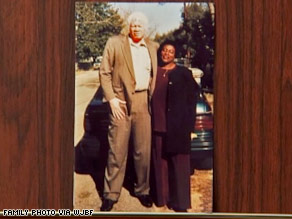Everything these days seems to be going “green.” I recall last spring a nationwide supplier of flowers and plants ran an add campaign that promoted the “pot” the plants were placed in. They weren’t saying how beautiful their plants were or how wonderful your yard would look when adorned with an assortment of their plants. Rather, they were touting that the containers the plants were placed in could be buried right there in your yard and that they  were biodegradable.
were biodegradable.
Well, it seems that the “Green” movement has taken root in the funeral and cemetery industry. Recently the National Funeral Directors Association released a question and answer series on “Green Funeral Service Questions and Answers.” While it needs to be stated that there is no licensing organization that has defined a “Green Funeral or Burial” – the NFDA is taking the lead in addressing questions about how funeral service professionals deal with the growing demand for “Green” products and services.
Below is a reprint of the NFDA Questions and Answers:
What is a green funeral?
A green funeral incorporates environmentally-friendly options to meet the needs of a family requesting a green service. A green funeral may include any or all of the following basic options: no embalming or embalming with formaldehyde-free products; the use of sustainable biodegradable clothing, shroud or casket; using recycled paper products, locally-grown organic flowers, organic food; carpooling; arranging a small memorial gathering in a natural setting; natural or green burial.
What is natural or green burial?
In a “purist” natural or green burial, the body is buried, without embalming, in a natural setting. Any shroud or casket that is used must be biodegradable, nontoxic, and of sustainable material. Traditional standing headstones are not permitted. Instead, flat rocks, plants or trees may serve as grave markers; some cemeteries use GPS to mark the locations of gravesites. A “natural or green burial” may also simply mean burial without embalming, in a biodegradable casket without a vault, when permitted by a cemetery.
What is a green cemetery?
A green cemetery is a burial site that does not permit vaults, non-biodegradable caskets or embalming chemicals. It uses no herbicides, pesticides or irrigation for maintenance of the cemetery grounds. Any material used at a green cemetery must meet the goal of replenishing the earth. There are cemeteries in the U.S. that accommodate both conventional burial practices and vaultless burial on their premises; others incorporate some features of a green cemetery such as sustainable landscape design and natural memorialization.
The first green burial in the modern sense took place in England in 1993; in the ensuing 15 years, the number of green burial grounds in the UK has grown to nearly 40. In the United States, one of the first natural burial grounds was opened in 1996 in western South Carolina. Some green cemeteries are established as conservation areas in accordance with specific state laws. There are now green cemeteries in 10 states – California, Florida, Georgia, Maine, New Jersey, New York, South Carolina, Texas, Washington, and Utah – with more under development. The resource section at the end of this Q&A provides a link to U.S. green burial information.
When a cemetery does require a vault, do I have “green” alternatives?
Check first with the cemetery to determine what is allowed, such as:
- Casket protectors or grave liners that are open on the bottom, such as those used in Orthodox Jewish funerals, so that the body comes into contact with the earth.
- Using a regular vault that is turned upside-down.
What about cremation? Is it considered “green”?
In general, cremation is not considered “green” because the cremation process uses nonrenewable fossil fuels, even though cremation does use fewer resources than conventional forms of disposition. Cremation also produces airborne emissions. However, cremated remains do not need to be interred in a cemetery, which reduces land use.
What is a green funeral home?
A green funeral home is a business that operates in an environmentally-responsible manner. Owners and staff comply with environmental protection, health, and safety laws and regulations, and follow NFDA’s environmental, health, and safety best practices. Green funeral homes are energy-efficient and follow resource-saving practices, operating in a manner that is sustainable. Sustainable in this sense means business practices that do not deplete resources and that only will have minimal impact on the environment.
It is interesting that when one searches for Green Burial one of the first sites that arises is the title “Carolina Green Burials” which is the site for cremation-sc.com. As pointed out by the NFDA cremation is not “green”. By some accounts it takes between 9 to 19 gallons of gas to properly cremate a body. Hence the use of petrocarbons and the emissions released do not meet the standard of “Green” funeral or burial. The argument in favor of cremation is it does not require the use of embalming fluid (although many bodies are embalmed before cremation takes place) and the lack of need for a specific burial space. “Green” however, provides the natural return to the earth and hence the use of space is insignificant as, over time, it can be reused.
While there are many sources for information -for more information about “Green” burial contact Joe Sehee, who is the founder/executive director of the Green Burial Council. He has worked in the green burial field since 2002 and the deathcare industry since 1999. A senior fellow with Environmental Leadership Program Fellow and a PERC “enviropreneur,” Joe also consults land trusts, park service agencies, and private landowners interested in developing burial grounds as a strategy for protecting natural areas. He can be reached at 888-966-3330.



 Posted by funeralnewsnow
Posted by funeralnewsnow  move the population toward cremation – a rising trend.
move the population toward cremation – a rising trend.
